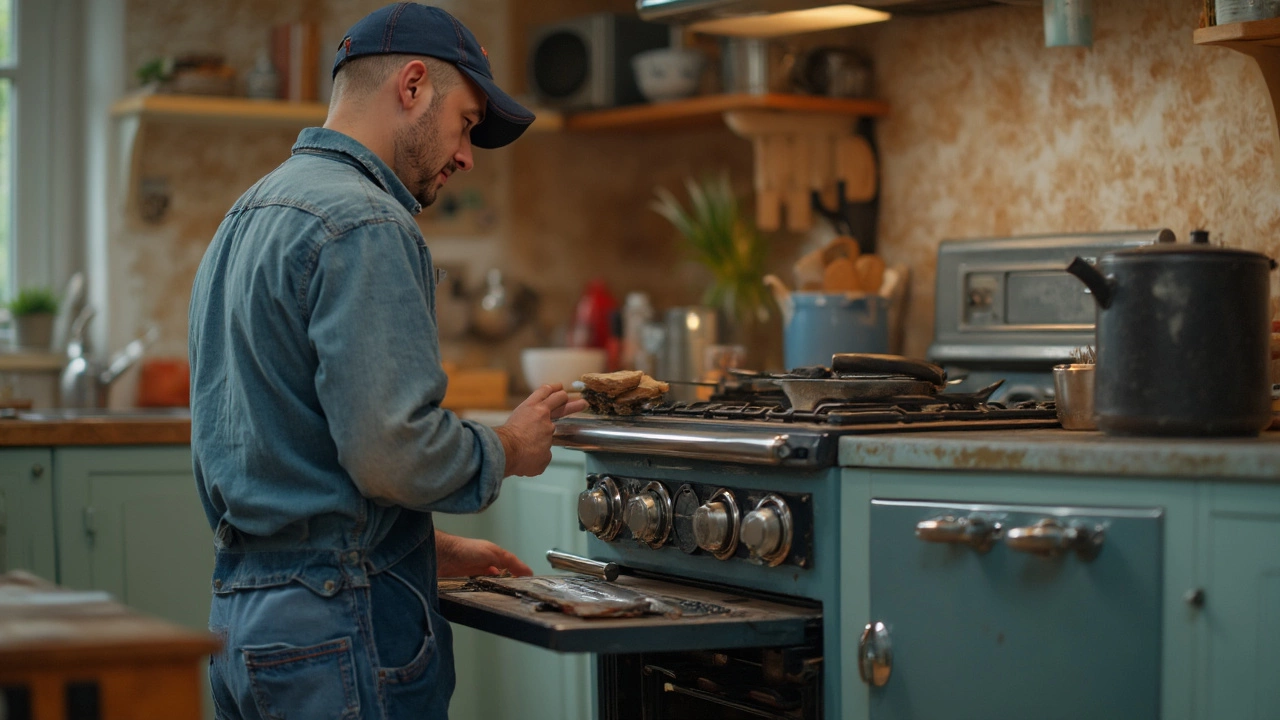Fixing Gas Ovens: Simple Steps to Get Your Oven Working Again
If your gas oven suddenly stops heating, makes weird noises, or bakes unevenly, you’re probably wondering what to do next. The good news is many issues are easy to spot and fix without calling a technician. In this guide we’ll walk through the most common problems, safe DIY fixes, and clearly show when it’s time to hand the job to a professional.
Common Issues and Simple Fixes
1. No heat at all – The first thing to check is the gas supply. Make sure the gas valve behind the oven is fully open and that the household gas line isn’t shut off. If the valve is open and you still have no flame, the igniter might be faulty. A bad igniter usually looks dark or cracked. You can test it by turning the oven on and watching for a clicking sound. No click? The igniter likely needs replacement.
2. Oven ignites but then goes out – This often means the flame sensor is dirty or the thermostat is misreading the temperature. Clean the sensor with a soft brush and a little vinegar. If the oven still cuts out, the thermostat could be failing and may need a professional’s touch.
3. Uneven cooking or hot spots – Over time, the burner ports can get clogged with food debris or grease. Remove the burner caps (usually they snap off), clean the holes with a toothbrush, and reassemble. Also, check the oven’s convection fan; a blocked fan will cause temperature swings.
4. Strange smells or clicking noises – A lingering gas smell is a red flag. Turn off the oven, open windows, and call a qualified technician immediately. Clicking noises are normal for the igniter, but if they continue after the oven lights, the igniter may be stuck.
5. Oven door won’t close properly – A warped door seal can let heat escape, making the oven work harder and stay hot longer. Inspect the rubber gasket for cracks and replace it if needed. The door hinges sometimes loosen; tighten the screws with a screwdriver.
When to Call a Professional
Even though many fixes are DIY‑friendly, some situations demand a trained pro. If you smell gas, have a cracked gas line, or the oven repeatedly shuts off after a few minutes, stop trying and call an expert right away. Also, if the igniter or thermostat needs replacement and you’re not comfortable handling electrical components, it’s safer to let a licensed technician handle it.
Professional repair technicians have the tools to test gas pressure, replace sealed parts, and ensure everything meets safety standards. A quick call can prevent a small issue from becoming a costly emergency.
Finally, keep your gas oven in good shape with regular maintenance: clean the burners quarterly, wipe down the interior after each use, and schedule a yearly service check if your oven is more than five years old. A little upkeep now saves you time, money, and hassle later.
Fixing gas ovens doesn’t have to be a nightmare. By checking the gas supply, cleaning the burners, and watching the igniter, you can solve most everyday issues yourself. When in doubt, trust a professional to keep your kitchen safe and your meals cooking perfectly.

Can Gas Ovens Be Repaired? Unveiling the Ins and Outs of Fixing Them
Gas ovens, a staple in many kitchens, can sometimes run into issues like not heating up properly or unexpectedly shutting off. While these problems can be frustrating, the good news is that most gas ovens can be repaired without too much hassle. Learning a bit about common issues can save you from unnecessary expenses and bring your oven back to life. This article dives into the typical problems and offers practical tips for troubleshooting and maintaining your gas oven. Whether you're a DIY enthusiast or considering professional help, these insights will prove beneficial.